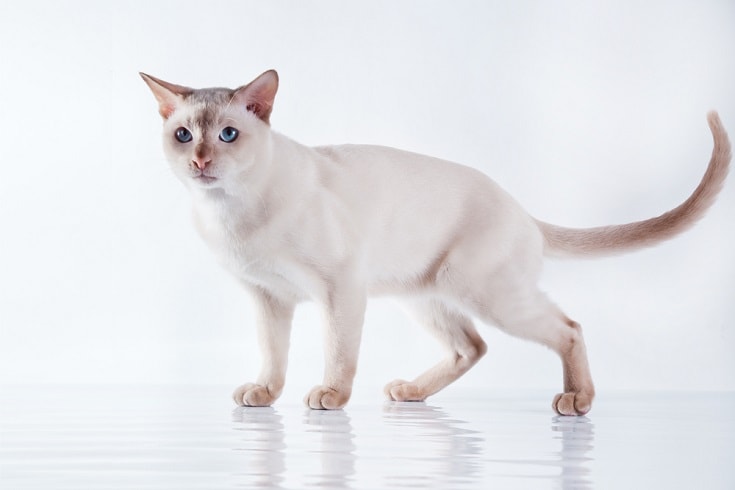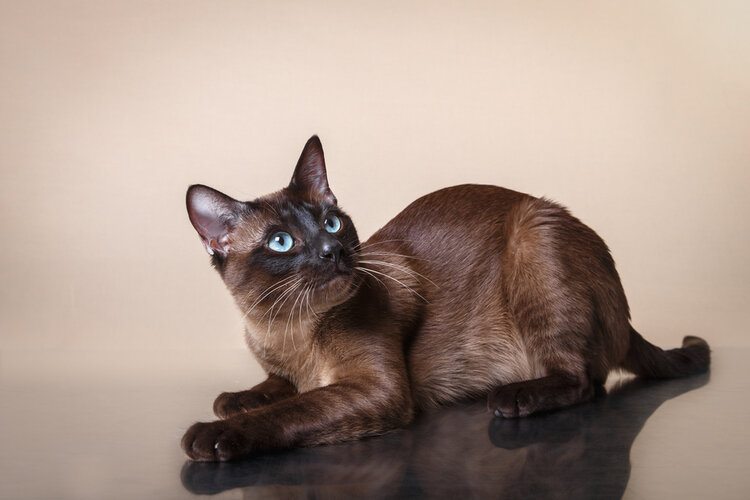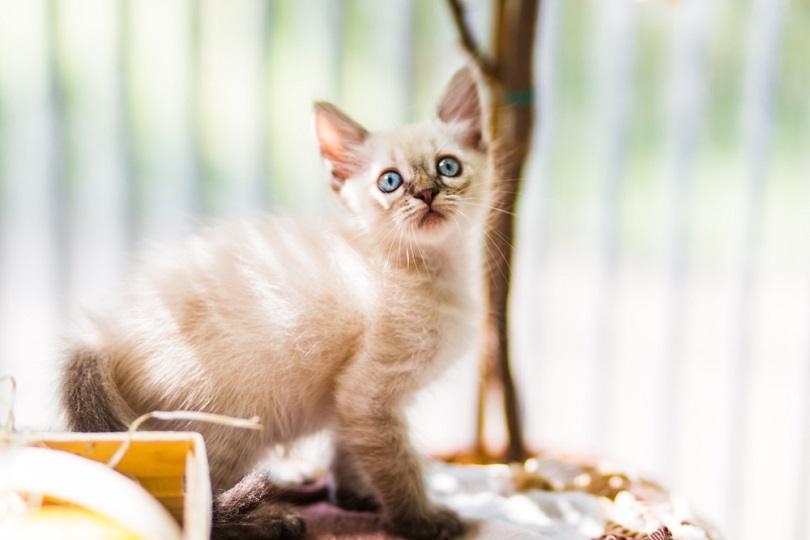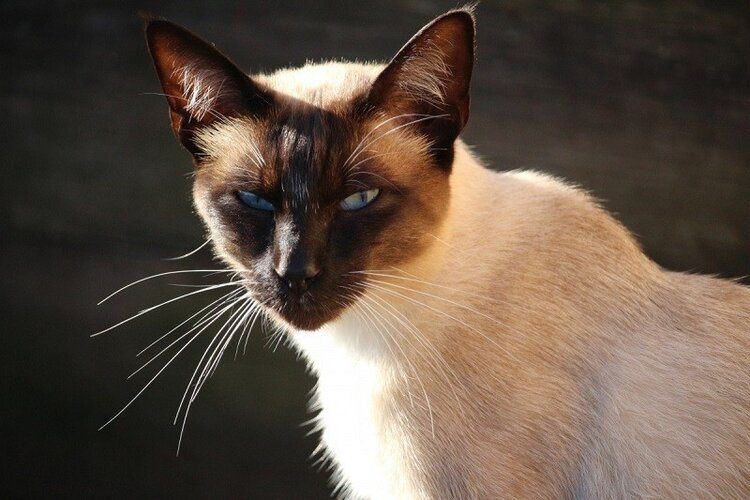
As a Tonkinese lover, you probably know that Tonkinese cats are a part of the Siamese cat family. Generally speaking, this is a healthy cat breed. The lifespan of a Tonkinese is about 10–15 years. But like all cats, the Tonkinese has particular health concerns that owners and potential owners should be aware of.
Let’s talk about seven health issues specific to the Tonkinese cat so you can be better prepared.
The 7 Tonkinese Cat Health Problems
1. Heart Disease
We don’t want to think about our beautiful Tonkinese kitties having heart trouble. However, the truth is that Tonkinese cats struggle with cardiomyopathy, a heart muscle disease.
There are two different types of cardiomyopathy. The most common type found in Tonkinese cats is hypertrophic cardiomyopathy (HCM). This is when the heart’s muscular wall thickens, making it difficult for the heart to pump blood throughout the rest of the body.
Tonkinese cats can be born with heart issues or develop problems later in life. Typical signs of heart disease include rapid breathing, lethargy, and inappetence.
Cats are good at hiding when they feel ill. The signs seem sudden, but the reality is that your Tonkinese cat might have been struggling with heart disease for a while, so it’s a good idea to have your cat evaluated often to prevent issues in the future.
Most cats with cardiomyopathy have a heart murmur, so this should be your first clue. Thankfully, there’s genetic testing for HCM. You can talk to your veterinarian about getting your Tonkinese tested.

2. Blood Clots
Cats with underlying heart issues are at a higher risk of developing blood clots or feline aortic thromboembolism (FATE).
FATE blocks the aorta, the largest artery in the body, and limits blood flow to the back of the legs. Typical signs of FATE include dragging the back legs, coldness, paralysis, and pain. Unfortunately, FATE is a life-threatening issue. Your cat needs to see a veterinarian as soon as possible if you notice these signs.
Some cats can survive FATE, but sadly, many don’t, and there’s a high chance of the blood clot returning. Your veterinarian may want to prescribe anti-blood-clotting medications if your cat struggles with heart problems or has survived a recent blood clot.
3. Inflammatory Bowel Disease
Tonkinese cats can also struggle with inflammatory bowel disease (IBD). Truthfully, it’s more of a syndrome than a disease. The stomach or intestines react to chronic irritation and cause vomiting and diarrhea.
If your cat is experiencing chronic vomiting and diarrhea, you’ll want to schedule a vet appointment as soon as possible. Your veterinarian will want to do a fecal exam, blood work, and perhaps an X-ray of the stomach and ultrasound.
4. Amyloidosis
Amyloidosis occurs when the bloodstream deposits proteins called “amyloid” in different tissues and organs, usually in the liver and kidneys. Amyloidosis is common in many Siamese bloodlines. Signs of amyloidosis include:
Sadly, there’s no medication to treat amyloidosis in cats. A veterinarian can stabilize the condition and help treat the kidneys if affected. The most important thing is to monitor organ function, fluid balance, and blood pressure in cats with amyloidosis.

5. Progressive Retinal Atrophy
Another medical concern for Tonkinese cats is progressive retinal atrophy (PRA). Having PRA means the photoreceptor cells in the eye decline, eventually leading to blindness. Abyssian and Persian cats are the two main cat breeds to struggle with this issue, but the Siamese bloodlines can also have this issue.
Thankfully, PRA isn’t a painful condition and is rarely noticed until later. The first sign is night blindness. Cats with PRA are reluctant to move around at night or even in dimly lit areas. Usually, a cat’s eye with PRA becomes very reflective when you shine a light on them.
Unfortunately, there’s no effective treatment for PRA. Thankfully, it’s not a physically painful condition, so your cat can live a relatively normal life with a few adjustments.
6. Nystagmus
Nystagmus is when your cat’s eyes flicker from side to side, almost as if they’re shaking. This medical condition is quite normal for Siamese breeds and isn’t life-threatening, so no need to worry! They see normally, just like any other cat.
Treatment isn’t needed for nystagmus. Cats with this condition can live just fine with this condition.
7. Crossed Eye
Crossed eye, called convergent strabismus, is a common issue with Siamese cats and can carry over into other Siamese bloodlines like the Tonkinese. Crossed eye is a genetic condition where the center of the retina shifts, causing the eyes to cross.
The biggest issue with this condition is poor vision. Thankfully, cats with crossed eyes can live normal lives as long as they’re kept indoors. The condition doesn’t hurt, and most cats with this condition are born with it.

Other Common Cat Health Concerns
Cats like to think they are invincible, and we like to think they are as well! Where did those nine lives come from, anyway?
All jokes aside, we know the truth. All cats, regardless of breed, get sick. Some serious health concerns that affect all cats include:
Other medical issues that are less concerning but worth mentioning include:
Again, these aren’t specific to the Tonkinese cat. All cat breeds can wrestle with these problems at any point in time. Keeping your cat indoors will help your cat live much longer, and a healthy lifestyle is always the best medicine.

Conclusion
For the most part, the Tonkinese is a healthy cat breed, but we can never take our pet’s health for granted. It helps to expect the unexpected should life throw a curveball. If you want a Tonkinese or own one already, talk to your veterinarian about these concerns. That way, you and your kitty can have peace of mind.
Featured Image Credit: dezy, Shutterstock







